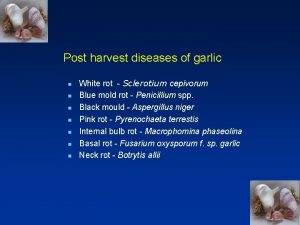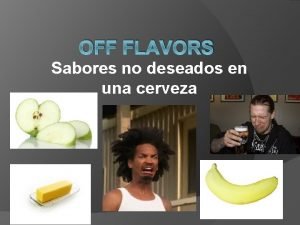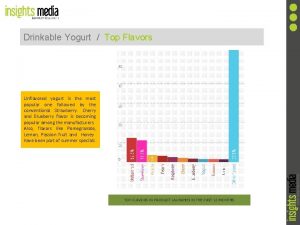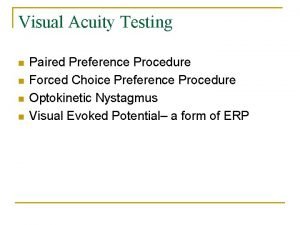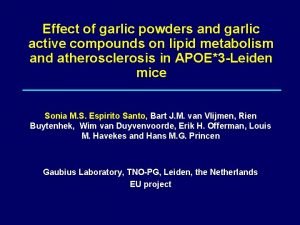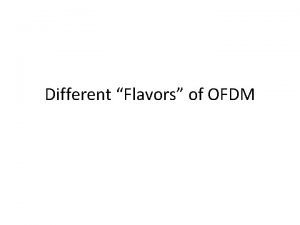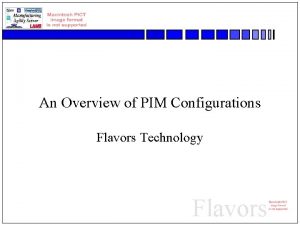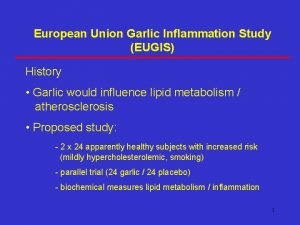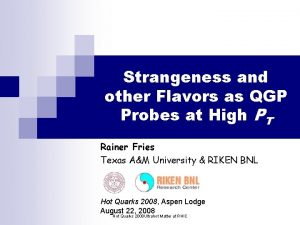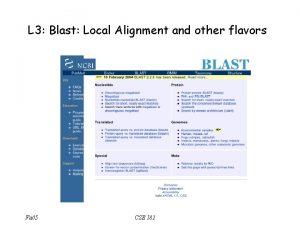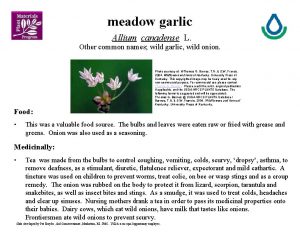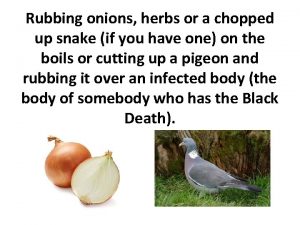Onions Garlic and other fun Sulfury Flavors from















- Slides: 15

Onions, Garlic and other fun Sulfury Flavors from New World Hops Scott Bickham, Ph. D. BJCP Exam Director BJCP Northeast/International Representative Grand Master IV Beer Judge scott. bickham@bjcp. org Copyright © 2018 Scott Bickham. All rights reserved.

20 Years ago, Sulfur-Struck appeared in Brewing Technique …Plus ça change, plus c'est la même chose Original article: https: //www. morebeer. com/articles/sulfur_compounds_in_beer https: //cervezomicon. wordpress. com/2016/12/20/con-el-azufre. Spanish translation: hemos-topado-amigo-jombriguer/

Sulfur aromas in nature are often warning signs �Stagnant water �Sewage �Poisonous gases �Skunks Ethanol versus ethyl mercaptan: substituting Oxygen with Sulfur makes a compound that is added to natural gas to make it easier to detect

Sources of Sulfur in Brewing Fermentation (yeast) Brewing Process: • Mash • Boil • Chilling water Thiol compounds in hops: amino acids

Sulfur characteristics are grouped into 4 categories in Class 7 of the Beer Flavor Wheel

Second tier descriptors are more familiar terminology when evaluating aroma and flavor

DMS is only one element of a larger family of cooked vegetable flavors

DMTS can produce onion-like flavors in beer

Many popular US and “new world” hops have sulfury aroma and flavor components • S-methyl methanethiosulfonate has been identified as a potent aroma compound in Centennial and Citra hops • Sauerkraut-like flavor with a detection threshold of 5 ppm

The way the hops are processed can impact the level of sulfury and grassy flavors in beer Green: Cat urine, green grass, tomato leaves, green peppers Vegetal: Celeriac, leek, onion, artichoke, garlic, wild garlic Stan Hieronymus, “Cascade – a study in hop terroir, ” Hops (28 -Feb, 2015)

• Onion and Garlic Character from New World Hops Mercaptans are sulfur compounds with very low thresholds • They are usually formed by yeast through the metabolism of sulfur-containing amino acids • They are also found in hop oils, particularly in some varieties of New World hops • Citra and Mosaic: ‒ Used in low amounts: pear, tropical fruit or sauvignon blanc ‒ High levels: ribes, cat urine, armpit sweat, or dank (“pungent, funky and odoriferous, refers to both good weed and very hoppy IPAs”) • Simcoe and Summit: ‒ The oils found in these hops varieties include mercaptan which has an aroma like freshly cut onions (dry-hopped IPAs)


Isovaleric Acid • Sweaty, leathery or barnyard character from Brettanomyces • Valeric esters have distinctive and pleasant fruitlike odors • Perfumes and cosmetics • Methyl valerate: flowery • Ethyl isovalerate: apple • Amyl valerate: pineapple

Troubleshooting Guide for Sulfur Flavors and Aromas (English)

Summary � Sulfur compounds in beer originate from all major ingredients: malt, hops, yeast and water � Many are volatile compounds with very low thresholds, but the traditional brewing processes tend to naturally reduce their concentrations to acceptable levels � Sulfur compounds can be difficult to troubleshoot because they readily convert into other compounds in response to changes in p. H, temperature, and staling (oxidation) reactions � High levels usually indicate issues with yeast health (autolysis) or contamination by Gram-negative bacteria
 Chef's salad is an example of a _____ salad.
Chef's salad is an example of a _____ salad. There are some onions on the table
There are some onions on the table Physical or chemical change
Physical or chemical change Magic bullet chop onions
Magic bullet chop onions Provides bulk and structure to baked goods
Provides bulk and structure to baked goods Allium sativum family name
Allium sativum family name Causal organism of neck and bulb rot in garlic is _____
Causal organism of neck and bulb rot in garlic is _____ Sabores no deseados en la cerveza
Sabores no deseados en la cerveza Principal of cooking
Principal of cooking Chobani flip flavors ranked
Chobani flip flavors ranked Ice cream flavors a to z
Ice cream flavors a to z Flavors.tools
Flavors.tools Flavors
Flavors Rice a roni flavors ranked
Rice a roni flavors ranked Fema
Fema Frusen gladje ice cream flavors
Frusen gladje ice cream flavors






